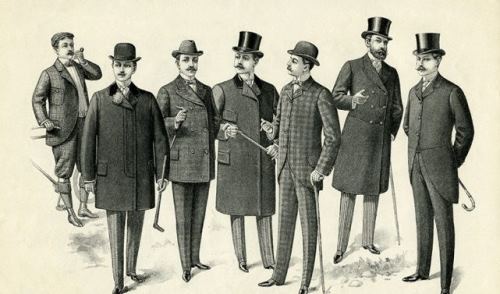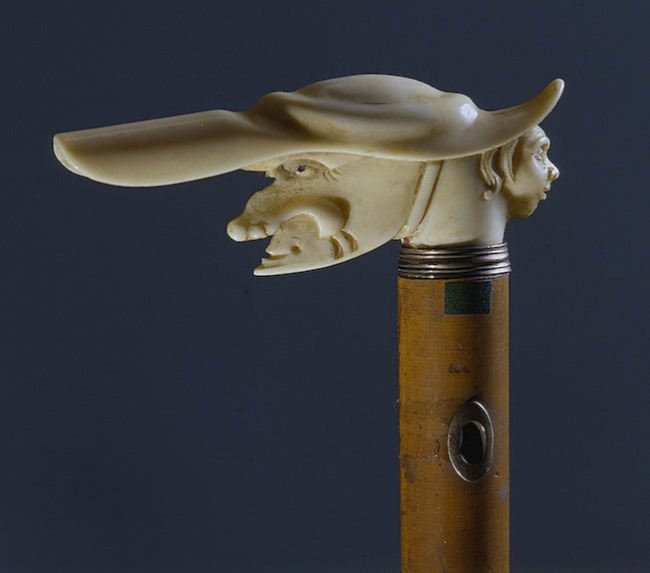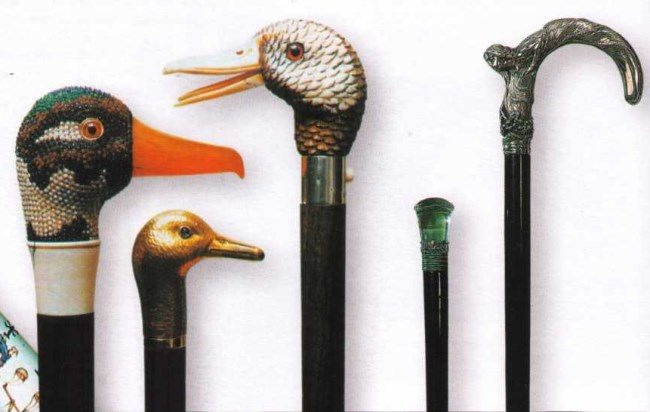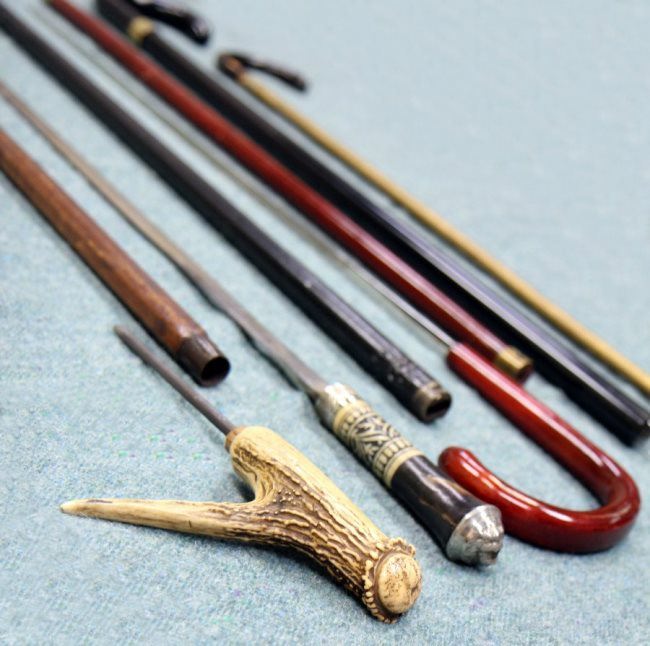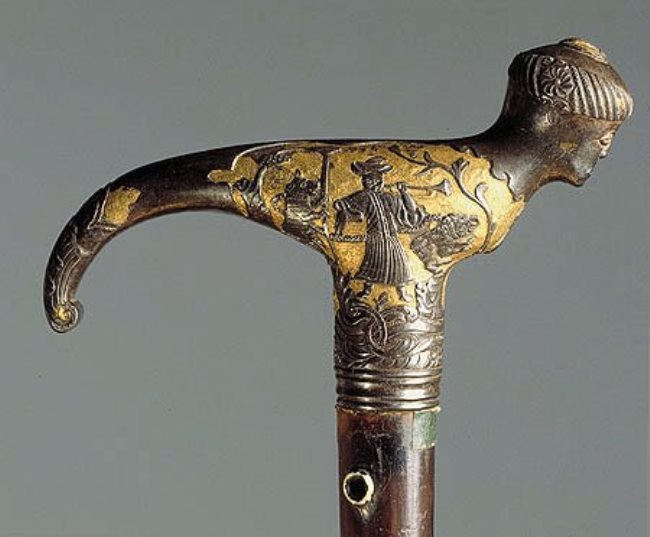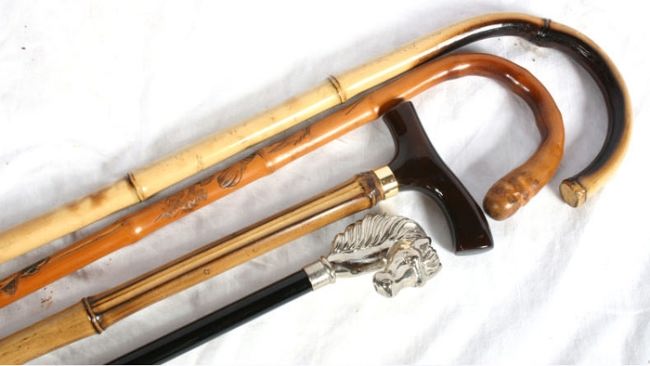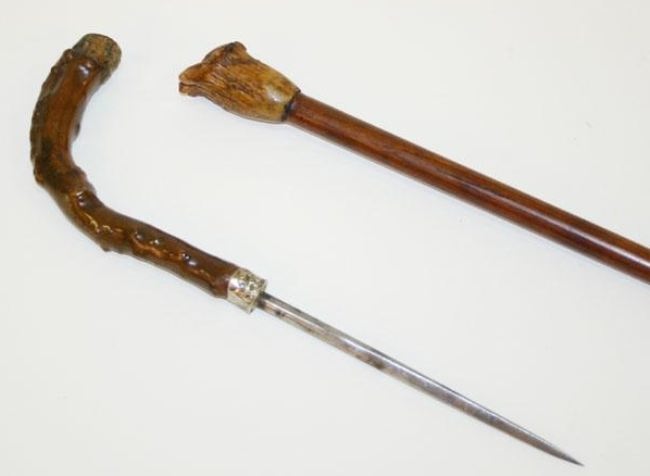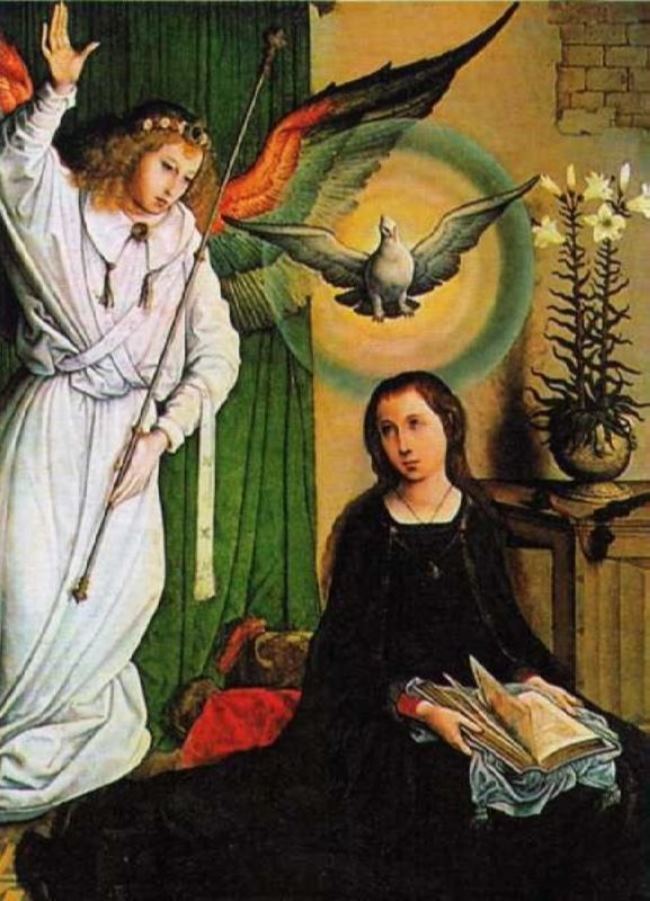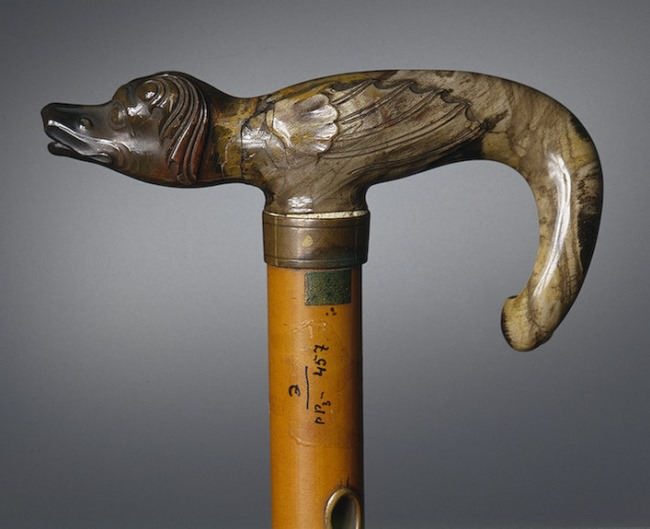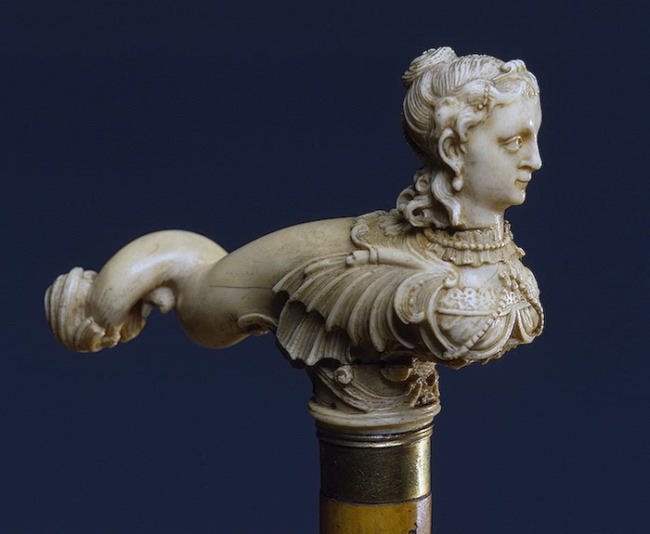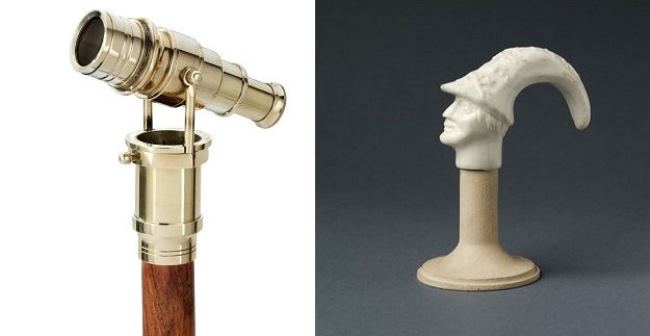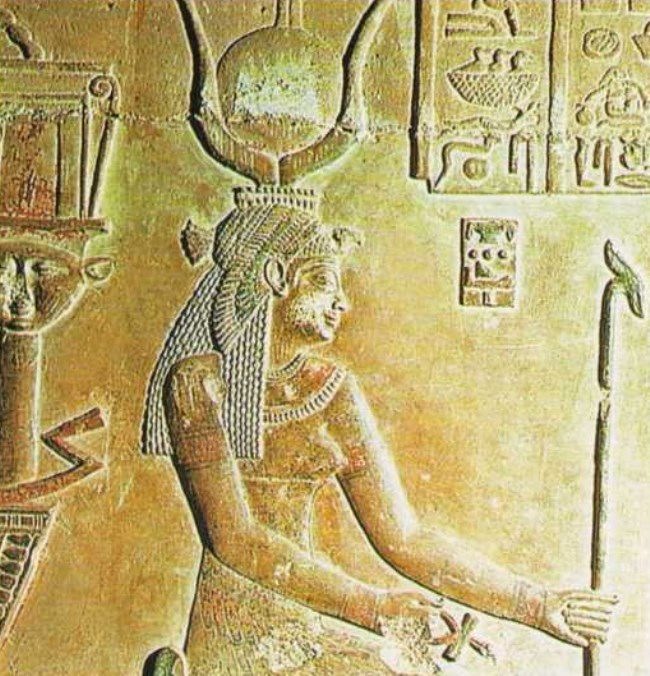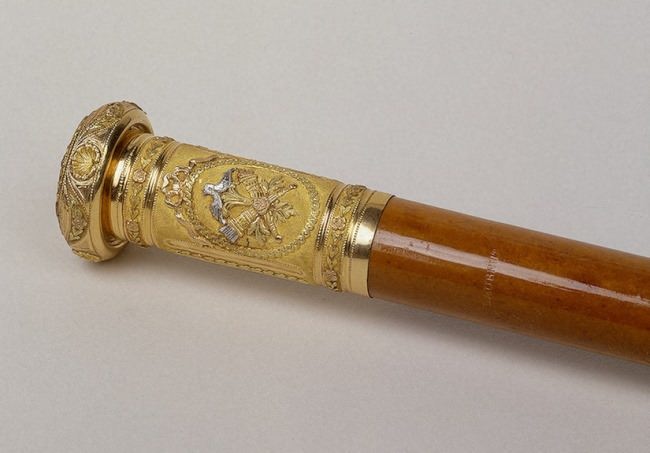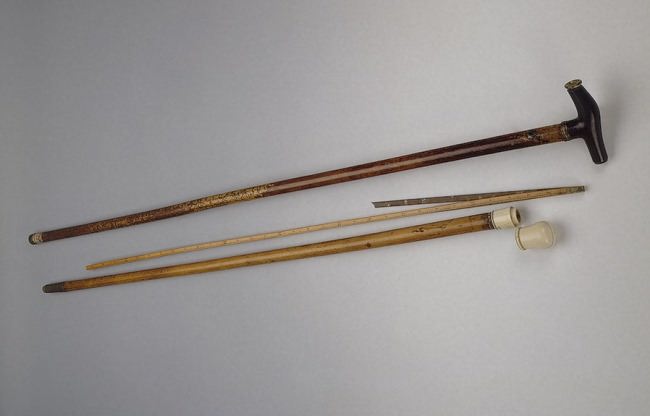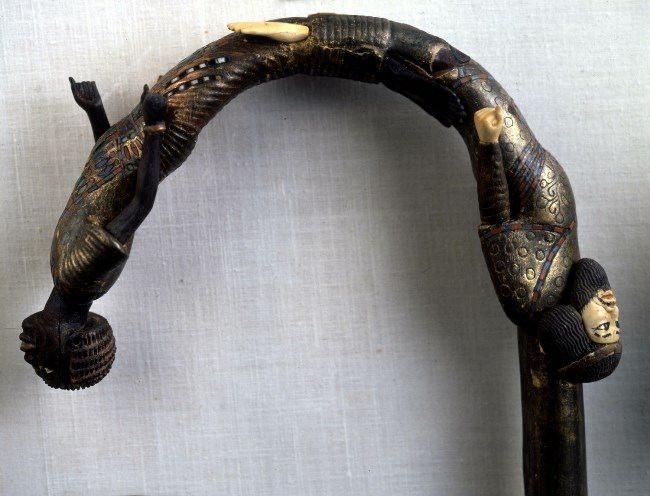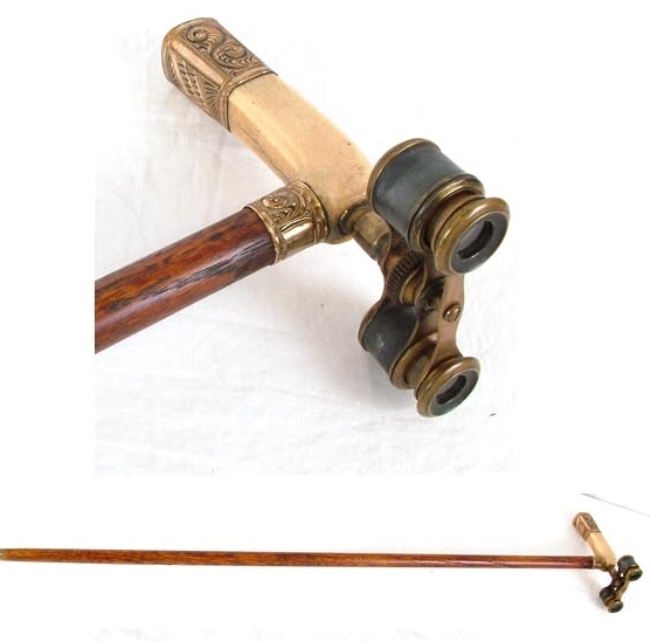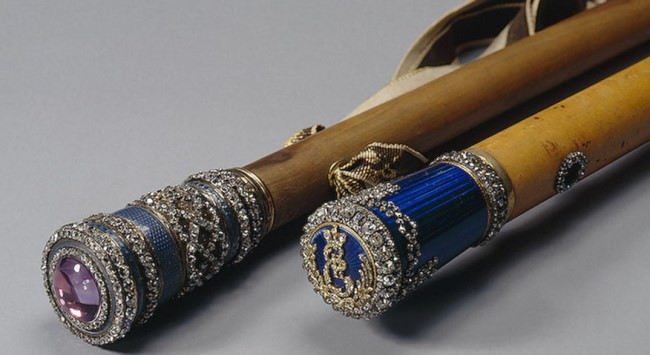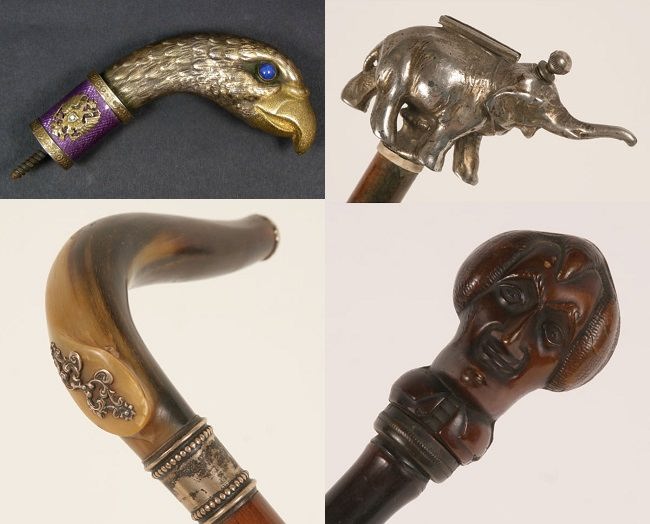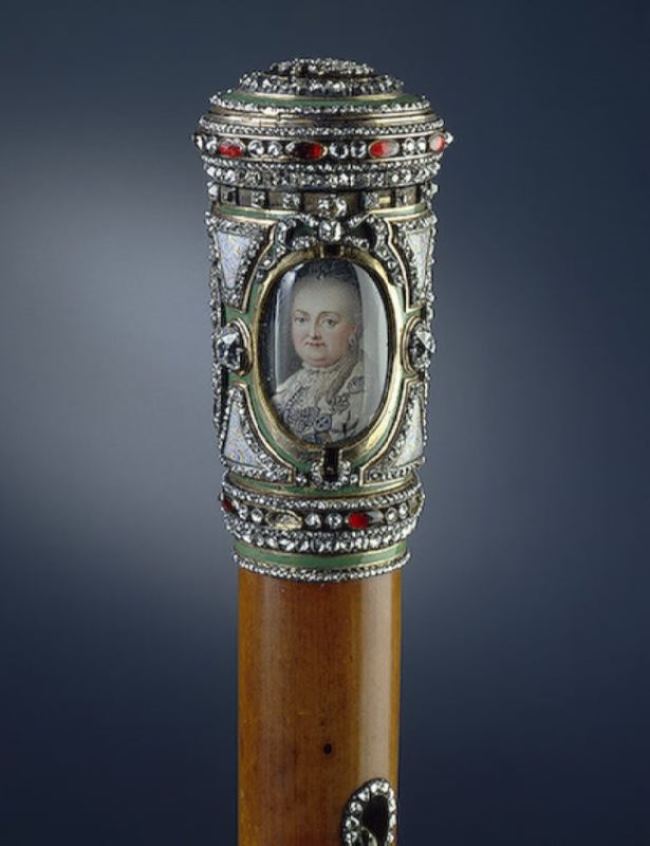Walking stick – Gentleman’s Companion
A walking stick is one of the most ancient objects in man’s everyday life. Having appeared as an irreplaceable thing in everyday life – shepherd’s stick, prop, crutch, it very soon turned into a symbol of supreme power and the most important attribute of rituals and divine services.
Osiris, Isis, Ra, Seth were portrayed with a stick. Ancient Greek and Roman gods also had ritual sticks. The triumphant stick, decorated with a golden eagle, the indispensable accessory of the commander, subsequently became a sign of the imperial power. By the way, the sticks were found in virtually all rooms of the tomb of Pharaoh Tutankhamun.
In medieval miniatures, Byzantine mosaics and frescos one can see simple elongated sticks, sometimes with a curved upper part or with a spherical shape, a knob topped with a shamrock, in the hands of the saints.
The hierarchs of the Christian church were depicted with long sticks with a rich gold pommel-cross. The stick of the bishops had an almost annular curved knob in the form of a blossoming branch – in memory of the flourished rod of Aaron. This form of the stick became dominant for the abbots of the Roman Catholic Church.
In all cultures, the stick was associated with the image of the traveler.
Walking stick is a very popular type of weapon in modern martial arts. It develops coordination and accuracy of movements, strengthens the body.
Initially, the walking stick was used by man as a support during walking. Subsequently, it became an element of the suit, indicating the social status of the owner. The image of an English gentleman or a French aristocrat is inextricably linked with a walking stick in his hand. At the same time, various masters began to put a variety of objects into sticks: watches, knives, combs and even flasks.
During the Baroque era the French fashionable women began to pay attention to walking sticks. And the sticks were not always exclusively decorative items, but really served as reliable supports for women. And this was due to the heavy outfits that ladies of that time wore. Sometimes the weight of the usual dress exceeded 5-8 kilograms, not counting other accessories.
In Russia, the stick became popular in the era of Peter I, and until the beginning of the 20th century it was an exceptional symbol of aristocracy. Peter himself was a well-known collector of various sticks. It is known that in his collection there were several very sophisticated models of sticks: a ruler stick, a sword stick and even a spyglass stick.
Starting to use the stick for support, a person immediately appreciated its capabilities as a means of self-defense. The Egyptians, and then the Greeks and Romans, highly valued the art of stick fighting.
In Europe, especially in the XIX century, the walking stick was the constant companion of a wealthy man. Many of them specially took lessons from famous fencing teachers.
The design of the combat stick was best suited for self-defense. The knob was made of metal, and the opposite end was covered with iron or sharpened. The sticks were made from particularly hard wood and in the hands of the master they turned into a formidable weapon.
A stick sword was a popular fashion accessory among representatives of well-to-do classes in the 18th and 19th centuries. Although the origin of this type of weapon is unknown, it is obvious that it has reached a wide spread at the peak of the development of sword technique. The stick sword was widely used in dueling and small conflicts in the XIX century, when the sword itself, as an attribute of the nobility, was legislatively prohibited. Such weapons were known in other countries and epochs, for example, in medieval Japan and the Roman Empire.
In different years a variety of materials were used for the manufacture of sticks. They were made from red and black wood, bamboo and even horns of rhinoceros were popular. And knobs were made more often with the use of precious stones – amber, ivory and turquoise.
The epochs were changing, and the faithful companion of the gentleman entered into fashion, then again was forgotten. But invariably the stick was and remains an attribute of a real man, a symbol of elegance and nobility.
Interesting facts about walking sticks
– It is known that the largest collection of sticks belongs to Luxembourger Helmut Bilger, who has more than 70,000 different sticks.
– In 1856, in the US, there was a well-known “fight” on sticks between Senator Sumner and Congressman Preston Brooks. After Brooks won the fight he was sent more than a dozen different sticks.
– In the Middle Ages, the stick became the symbol of the highest military position.
– A respectable secular man considered it a good idea to have a dozen different sticks: everyday, for routs, for the theater, sports, day, evening and so on. The stick should correspond to mood, political views, fashion trends. There were sticks that turned into a fishing rod or a smoking pipe.
– Prussian King Frederick the Great presented the Empress Catherine II with a stick with an amber knob in a gold frame studded with diamonds.
Walking stick – Gentleman’s Companion
Walking stick – Gentleman’s Companion
